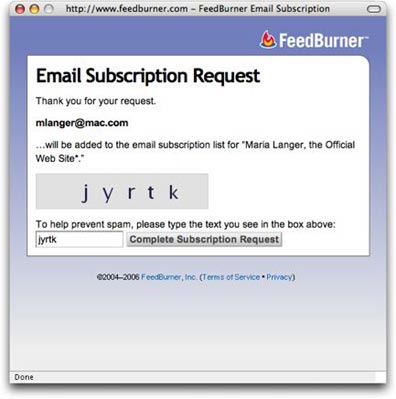From MPDailyFix.com.
Tim Jackson at MPDailyFix.com wrote an article back in November titled “What Does It Mean to Be a ‘Good Blogger’?“that I just stumbled upon. In it, he provides five tips for better blogging. Here they are with my take on them; you should read Tim’s article for his take.
- Know your topic. You really shouldn’t write authoritatively about a topic when you don’t know enough about the topic to do so. Opinion is one thing, but if it’s based on facts, get the facts straight. That means doing your homework. These days, that’s easy — you’re sitting in front of a computer connected to the Internet, aren’t you? Use Wikipedia, Google, or your favorite search engine to find articles that explain things you aren’t sure about. This really hits home with me today because just yesterday I was blasted for not knowing off the top of my head that Apple sells a “two-button” mouse. I was familiar with the Mighty Mouse product but did not know all of its features. I corrected myself in the very next post, but that wasn’t enough for some readers. Ouch!
- Know your audience. This one is extremely difficult for me, primarily because this site covers so many topics: support for my books and articles, stories about flying, information about writing, opinions, articles about travel, and stories about the things that go on in my life. Exactly who does this blog appeal to? I have no idea. But I can use stats or metrics to learn more about what people are reading when they come here. For example, yesterday’s article “Apple’s ‘Two-Button’ Mouse” was a huge hit with visitors, getting hundreds of page views and nine comments in a matter of hours. (Huge numbers for this site.) Articles about blogging and statistics also seem to do very well. Is that what my audience wants? Perhaps I should deliver more. But I’ve also decided to install polling software that asks readers which topics interest the most. That might help, too.
- Read other blogs and leave comments on them. This is something I’ve been working hard to squeeze into my schedule. I’ve found that RSS reader software (I use Endo) is very helpful because it delivers articles or summaries of articles right to one central location. I can spend a few minutes browsing through the inbox, then follow links to the original articles. That’s how I found the article I’m discussing here. This is time consuming but it has three major benefits: (1) I learn a lot about the topics I’m following, (2) I get fodder for articles on this blog (or at least links for my automated del.icio.us links posts (see This just in…), and (3) I’m able to become part of the blogging community. (More on that in a moment.)
- Follow the links. This isn’t a huge deal for me, since I don’t have many incoming links. Yet. But it is important to see who is linking to your site. Sadly, many of the incoming links appear to be from sites trying to up their Google ranking by linking to other sites. But when I do follow a quality link, it’s good to see that someone else has appreciated what I’ve written. And that brings us to Tim’s last tip.
- Say thanks. This is a great way to become part of the blogging community. When someone has linked to one of your posts, it’s always nice to say thanks. Not only does this make the person on the other end feel good about sharing your work with other readers, but it builds community. This morning provided a great example of this in my e-mail inbox: I had a thank you note from the author of one of the articles I’d blogged about yesterday. She’d spent a few moments on my site and had some positive things to say about the Contact Me page, which has always been a sore subject. It was nice of her to take the time to write and even nicer to get some positive feedback about my rather strict contact policies.
Again, this is my take on Tim’s five tips. To read Tim’s take and the comments left by readers on his site, read his article.
And I’d love to get some comments about this topic here. Use the Comments link.


 The service, which is full automated, works with the E-Mail Notification form that appears on the site’s Home page. A person who wants to subscribe enters his e-mail address and clicks Subscribe. A window opens with a form that prompts him to enter characters in a box. When he clicks Complete Subscription Request, Feedburner generates a confirmation e-mail message and sends it to his e-mail address. That prevents people from subscribing others to this service when they might not want it. He must click the link in that message when he receives it (normally within about a minute) to start the subscription. If he doesn’t click the link, the subscription does not start.
The service, which is full automated, works with the E-Mail Notification form that appears on the site’s Home page. A person who wants to subscribe enters his e-mail address and clicks Subscribe. A window opens with a form that prompts him to enter characters in a box. When he clicks Complete Subscription Request, Feedburner generates a confirmation e-mail message and sends it to his e-mail address. That prevents people from subscribing others to this service when they might not want it. He must click the link in that message when he receives it (normally within about a minute) to start the subscription. If he doesn’t click the link, the subscription does not start.